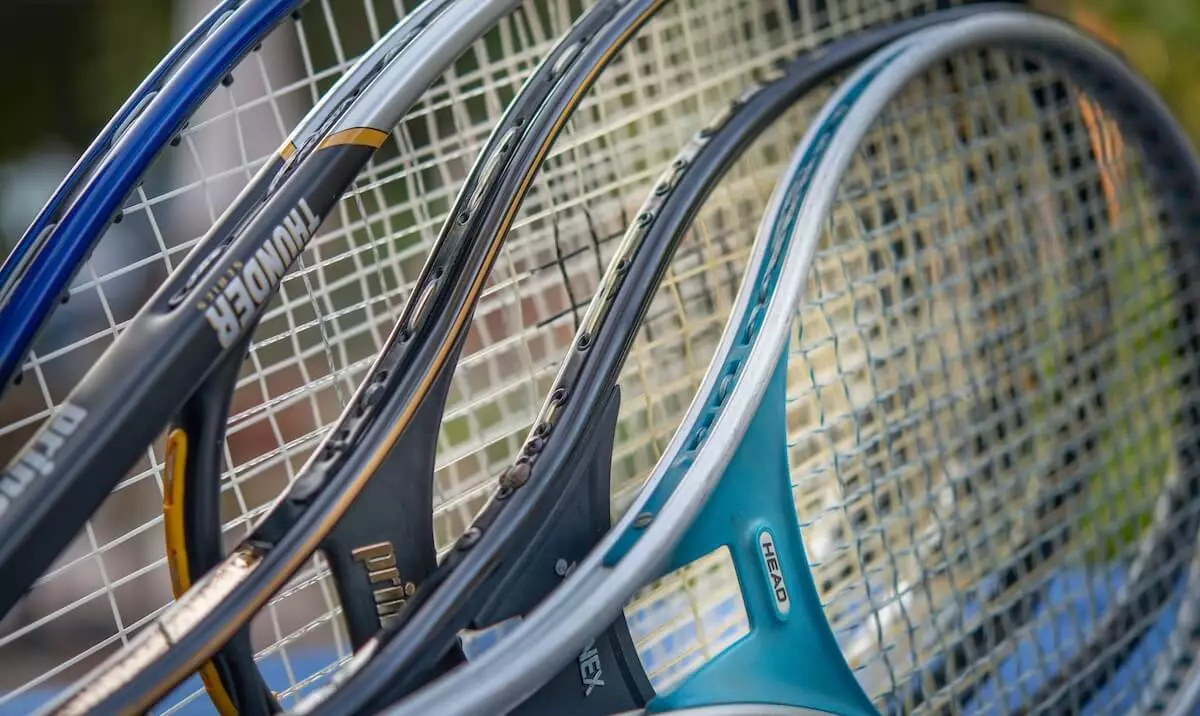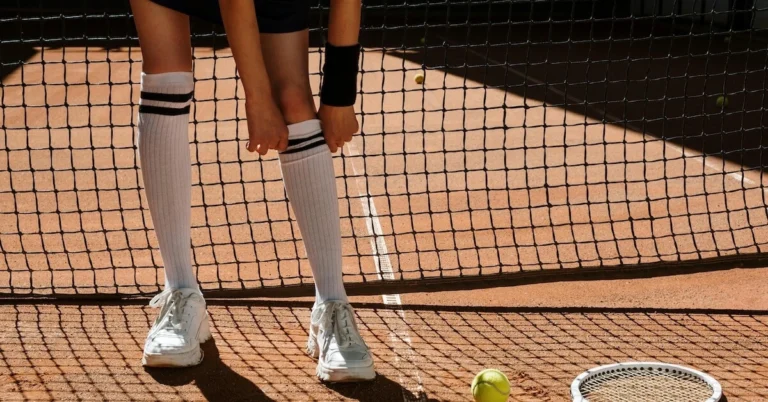When it comes to tennis, choosing the right tennis racket string tension can make a significant difference in your game. The string tension affects the power, control, and feel of your shots, so it’s essential to understand how to find the right balance for your playing style. In this article, we’ll guide you through the process of selecting the right tennis racket string tension.
Firstly, it’s essential to consider your level of play and the type of strings you’re using. Beginners should typically start with lower string tensions, while advanced players may prefer higher tensions. Additionally, the type of strings you’re using can impact the ideal tension level. For example, natural gut strings typically require higher tensions than synthetic strings. By considering these factors, you can narrow down the range of string tensions that may work best for you.
Next, you’ll want to experiment with different tension levels to determine which feels the most comfortable and effective for your game. It’s recommended to start with the middle of the recommended tension range for your racket and adjust up or down from there. Keep in mind that small adjustments in tension can make a significant difference in your shots, so it’s worth taking the time to find the right tension for you. With these tips in mind, you’ll be well on your way to finding the perfect tennis racket string tension for your game.
Pro:
✅ best all-rounder ✅ stability ✅ high support
Con:
❌ maybe you need some time to get used to it
The Basics of Tennis Racket String Tension
As a tennis player, understanding the basics of tennis racket string tension is crucial to your game. String tension affects your control, power, and spin. In this section, we will cover the basics of tennis racket string tension, including what it is and how it is measured.
What is Tennis Racket String Tension?
String tension is the measurement of how tight the strings are pulled in the frame of the tennis racket. The tension rate varies anywhere from 40 lbs (18 kg) being the lowest and 65 lbs (29.4 kg) at the highest. A tighter string tension will provide more control and accuracy, while a looser string tension will give you more power and spin.
How is Tennis Racket String Tension Measured?
String tension is measured in either kilograms (kg) or pounds (lbs). The recommended tension range for most tennis players is between 50-60lbs. However, the right tension for you depends on your playing style, level, and the type of string you use.
It’s important to note that high string tension can increase the risk of arm injuries, so if you are using a stiffer string material like polyester, we’d recommend stringing looser to avoid arm injuries. Moreover, if you are using a hybrid string setup with a polyester and something softer like a multifilament or natural gut, we usually recommend stringing the polyester at 5 percent lower tension to account for its stiffness relative to the other string.
Choosing the Right Tennis Racket String Tension
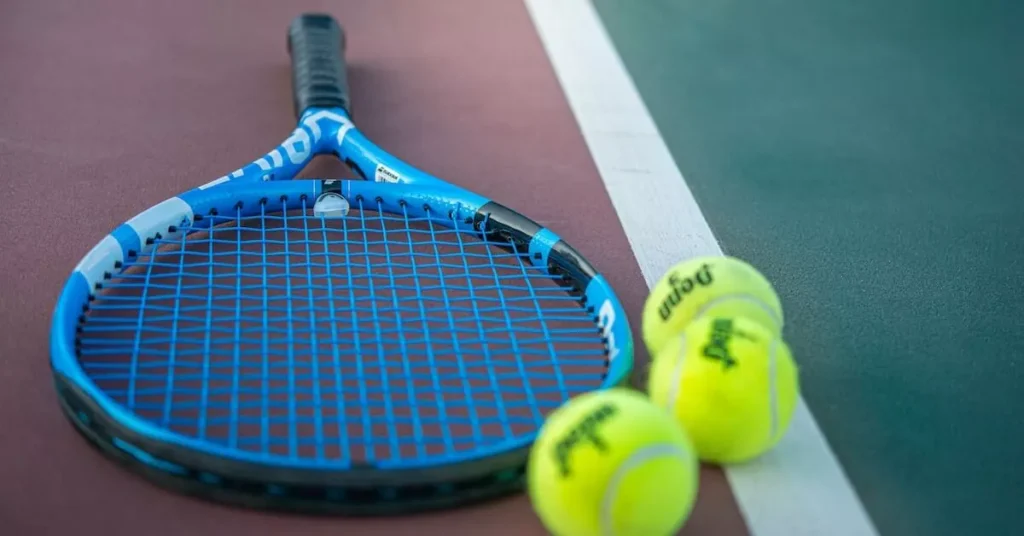
When it comes to choosing the right tennis racket string tension, there are a few factors to consider. The tension of your strings can have a significant impact on your performance on the court, so it’s important to choose wisely. In this section, we’ll discuss the factors you should consider when choosing your string tension and the effects that string tension can have on your gameplay.
4 Factors to Consider
There are several factors to consider when choosing the right tennis racket string tension. Here are a few to keep in mind:
- Skill level: Your skill level is an important factor to consider when choosing your string tension. Beginners may benefit from a lower tension, while advanced players may prefer a higher tension.
- Playing style: Your playing style can also impact your string tension needs. Players who hit with a lot of topspin may benefit from a higher tension, while players who hit with more slice may prefer a lower tension.
- Racket type: The type of racket you’re using can also impact your string tension needs. Some rackets are designed to be strung at a higher tension, while others are better suited for a lower tension.
- Personal preference: Ultimately, your personal preference should also be taken into account when choosing your string tension. Some players prefer a looser string bed for more power, while others prefer a tighter string bed for more control.
Effects of Tennis Racket String Tension on Gameplay
The tension of your strings can have a significant impact on your gameplay. Here are a few effects to keep in mind:
- Power: A looser string bed can provide more power, while a tighter string bed can provide more control.
- Spin: A tighter string bed can also help generate more spin on your shots.
- Comfort: A lower string tension can provide a more comfortable feel, while a higher string tension can feel stiffer and less forgiving.
- Durability: A higher string tension can also lead to more string breakage, while a lower tension can be more forgiving on your strings.
Stringing Your Racket at the Desired Tension
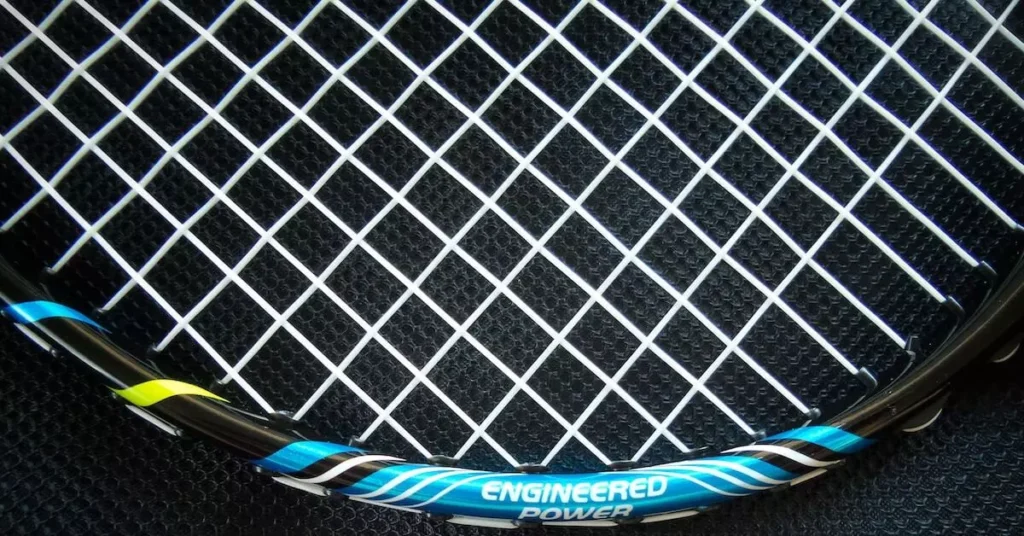
When it comes to tennis racket string tension, there is no one-size-fits-all answer. The right tension for your racket depends on a variety of factors, including your playing style, skill level, and personal preference. Here are some tips on how to string your racket at the desired tension.
Professional Stringing vs. DIY
If you are new to tennis, you may be wondering whether to have your racket professionally strung or to do it yourself. While professional stringing can be more expensive, it ensures that your racket is strung correctly and at the right tension. However, if you have experience stringing rackets and feel confident in your abilities, you can save money by doing it yourself.
5 Steps to Stringing Your Tennis Racket
If you decide to string your racket yourself, here are the basic steps to follow:
- Remove the old strings.
- Install the new strings.
- Secure the strings to the racket.
- Adjust the tension.
- Tie off and cut the strings.
Be sure to follow the manufacturer’s instructions and use the right tools for the job.
Experimentation and Fine-Tuning
Once you have strung your racket at a certain tension, you may find that it doesn’t feel quite right. This is where experimentation and fine-tuning come in. Try playing with different tensions to see which one feels best for you. You may also want to experiment with different types of strings to see which ones work best with your playing style.
Tennis Racket String Tension in Professional Tennis
In professional tennis, players often have their rackets strung at different tensions depending on the conditions of the court and the type of string they are using. For example, a player may have their racket strung at a lower tension for clay courts and a higher tension for hard courts. It is important to note, however, that these tensions are specific to each player and may not work for everyone.
Choosing the Right String Tension for Different Courts
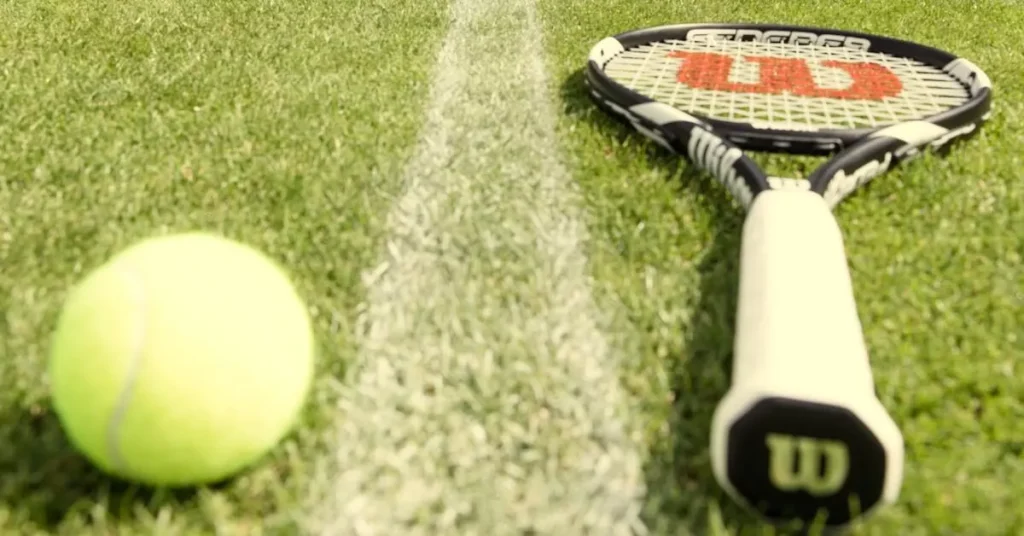
When it comes to choosing the right string tension for your tennis racket, it’s important to consider the type of court you’ll be playing on. Different courts have different characteristics that can affect how your racket performs, and adjusting your string tension accordingly can help you get the most out of your game.
Clay Courts
On clay courts, the ball tends to bounce slower and higher, which means you’ll need to generate more spin to keep the ball in play. To do this, you may want to consider using a lower string tension. Lower string tensions can help you generate more power and spin, which can be especially useful on clay courts.
Hard Courts
Hard courts are faster and have a lower bounce than clay courts, which means you’ll need to adjust your string tension accordingly. A higher string tension can help you generate more power and control on hard courts, which can be especially useful if you’re looking to hit flatter shots.
Grass Courts
Grass courts are the fastest of all the court types, which means you’ll need to be able to generate a lot of power and control to keep up. A higher string tension can help you achieve this, as it can help you generate more power and control on your shots.
Special Considerations in String Tension
When it comes to tennis racket string tension, there are a few special considerations that you should keep in mind. These factors can impact the playability of your racket, as well as the overall longevity of your strings.
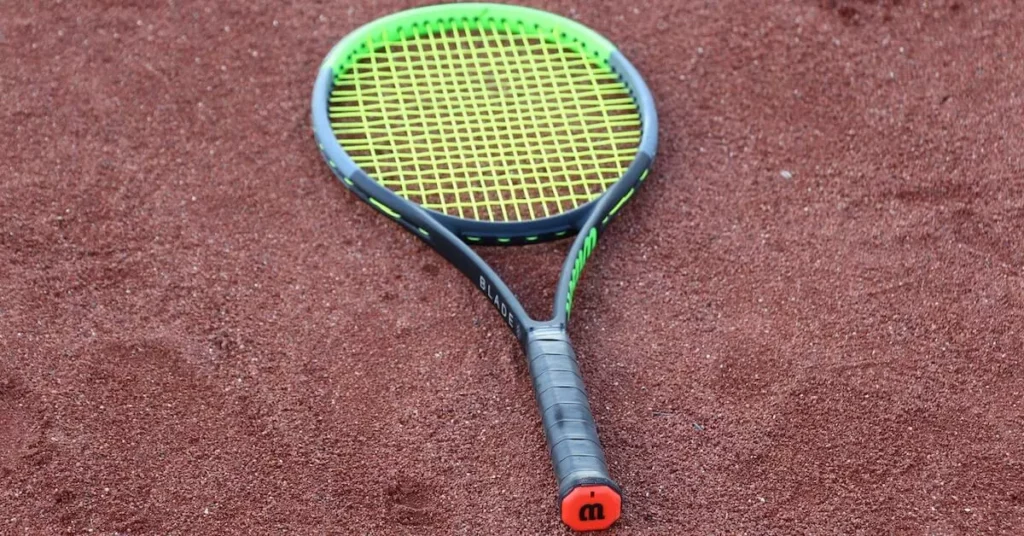
Hybrid Stringing
One option to consider is hybrid stringing, which involves using different types of strings in the mains and crosses of your racket. This can help you achieve a balance between power and control, as well as durability and feel. For example, you might use a softer, more responsive string in the mains, and a stiffer, more durable string in the crosses.
String Gauges
Another factor to consider is string gauge, or the thickness of the string. Thicker strings tend to be more durable, but can also be less responsive and generate less spin. Thinner strings, on the other hand, can offer more spin and feel, but may not last as long. It’s important to find a balance that works for your playing style and preferences.
Tension Tester
To ensure that you’re getting the most out of your strings, it’s important to have them strung at the right tension. You can use a tension tester to measure the tension of your strings and make any necessary adjustments. Keep in mind that different strings may require different tensions to achieve optimal playability.
Octagonal Shaped Strings
Octagonal shaped strings are becoming increasingly popular among tennis players. These strings feature eight sides instead of the typical round shape, which can help generate more spin and snapback. However, they may not be as durable as traditional round strings, so it’s important to consider your priorities when choosing your strings.
Maintaining Tennis Racket String Tension
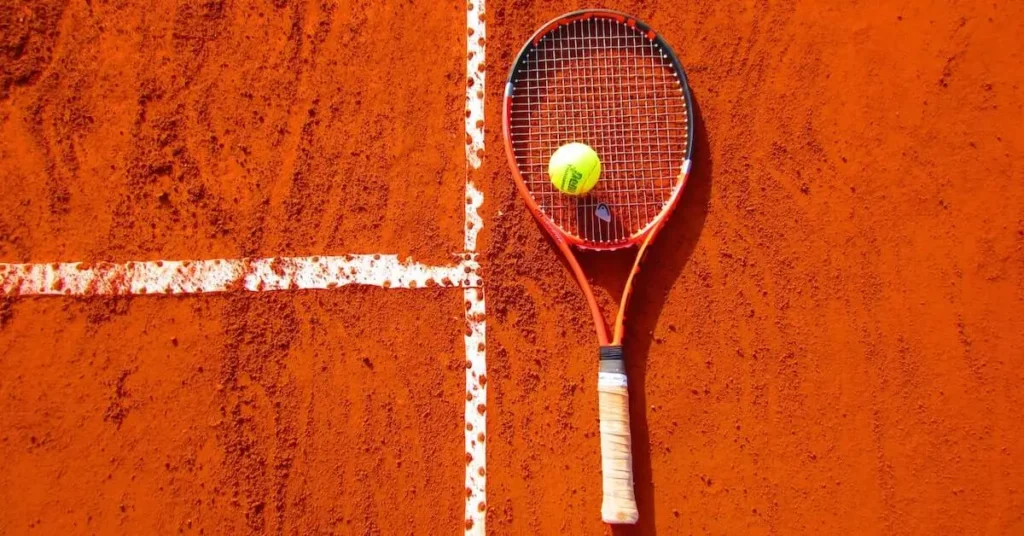
Tennis Racket String tension is a crucial factor in the performance of your tennis racket. However, over time, the tension of the strings will naturally decrease due to use and other factors. It is important to maintain string tension to ensure optimal performance and longevity of your racket. Here are some tips on how to maintain string tension.
How Tennis Racket String Tension Changes Over Time
Tennis Racket String tension decreases over time due to several factors, including the material of the strings, frequency of use, and exposure to environmental conditions such as heat and humidity. As a result, it is essential to inspect your strings regularly and restring when necessary.
4 Tips for Preserving Tennis Racket String Tension
Here are some tips for preserving the tension of your tennis racket strings:
- Store your racket in a cool, dry place when not in use to prevent exposure to heat and humidity.
- Avoid leaving your racket in your car or other areas exposed to extreme temperatures.
- Do not over-tighten your strings, as this can cause them to break more easily.
- Use a quality stringing machine and have your racket restrung regularly by a professional.
Regular String Inspections
It is essential to inspect your strings regularly to ensure they are in good condition and maintain optimal tension. Check for signs of wear and tear, including fraying and broken strings. If you notice any damage, it is time to restring your racket.
String Material and Tension Maintenance
Different string materials have different properties that affect their tension maintenance. For example, natural gut strings have excellent tension maintenance, while synthetic strings tend to lose tension more quickly. It is essential to choose the right string material for your playing style and to maintain the tension accordingly.
How to Measure Tennis Racket String Tension
To measure tennis racket string tension, you can use a string tension meter or a calibrated racket. A string tension meter is a small device that measures the tension of your strings. A calibrated racket has markings on the strings that indicate the tension. It is recommended to measure string tension regularly to ensure optimal performance.
Reducing the Risk of Tennis Elbow

Tennis elbow is a common injury that can be caused by a variety of factors, including improper technique, overuse, and poor equipment choices. However, one factor that can contribute to tennis elbow is the tennis racket string tension. Here are some tips to help reduce your risk of developing tennis elbow by adjusting your racket string tension.
Choose the Right Tension
The tennis racket string tension can have a significant impact on the amount of force experienced at the elbow during a stroke. According to a study published in the Journal of Sports Sciences, higher string tensions can lead to increased elbow loading during backhand strokes. Therefore, it is important to choose a tension that is comfortable for you and does not cause excessive strain on your arm.
Consider String Type and Gauge
In addition to tennis racket string tension, the type and gauge of your racket strings can also affect your risk of developing tennis elbow. Looser, thinner, and more resilient strings can be easier on your arm, as they stretch more and spread the force of impact over a longer period of time. This reduces the peak shock and can help prevent injury. However, looser strings can also result in less control, so it is important to find a balance that works for you.
Pay Attention to Your Technique
While adjusting your tennis racket string tension can help reduce your risk of tennis elbow, it is also important to pay attention to your technique. Using your whole lower body to put power into your stroke, not just your arm, can help reduce the strain on your elbow. Additionally, using a two-handed backhand can also help distribute the force more evenly across your arms and reduce the risk of injury.
Consider Comfort and Feel
Finally, when choosing your racket and strings, it is important to consider comfort and feel. Rackets with larger sweet spots and vibration dampening technology can help reduce the shock and strain on your arm. Additionally, experimenting with different string types and tensions can help you find a combination that feels comfortable and reduces your risk of injury.
By taking these steps to adjust your tennis racket string tension and pay attention to your technique, you can help reduce your risk of developing tennis elbow and enjoy the game without pain or injury.
FAQ
How do I choose a tennis racket string tension?
Choosing the right tennis racket string tension can be a daunting task, but it largely depends on your playing style and skill level. Beginners should start with a lower tension as it provides more power and control, making it easier to hit the ball. Advanced players, on the other hand, may prefer a higher tension for more precision and spin. It’s best to experiment with different tensions to find the one that suits you best.
Is higher or lower string tension better?
There is no one-size-fits-all answer to this question. Higher string tension can provide more control and spin, but it also results in less power. Lower string tension, on the other hand, provides more power but less control. It’s important to find the right balance that suits your playing style and skill level.
What tension should I string my racket at?
The recommended string tension for your racket can usually be found on the frame or in the manufacturer’s instructions. However, it’s important to note that these are just guidelines and that the ideal tension varies from player to player. A good starting point is to string your racket at the middle of the recommended tension range for your strings.
Does higher string tension mean more power?
No, higher string tension does not necessarily mean more power. In fact, higher string tension can result in less power due to the decreased trampoline effect of the strings. However, it can provide more control and spin.
How do you know when it’s time to restring your tennis racket?
It’s recommended to restring your tennis racket every 40-50 hours of play or at least once a year, whichever comes first. Signs that it’s time to restring your racket include decreased tension, visible wear and tear on the strings, and decreased performance.
Are there any recommended string tensions for players with tennis elbow?
Players with tennis elbow may benefit from a lower string tension as it provides more power and less shock to the arm. However, it’s important to consult with a medical professional before making any changes to your equipment or playing style.
Join the discussion and share your thoughts on tennis racket string tension. What’s your preferred tension and why? Leave your insights and experiences in the comments below and let’s learn from each other to optimize our tennis equipment for peak performance!

